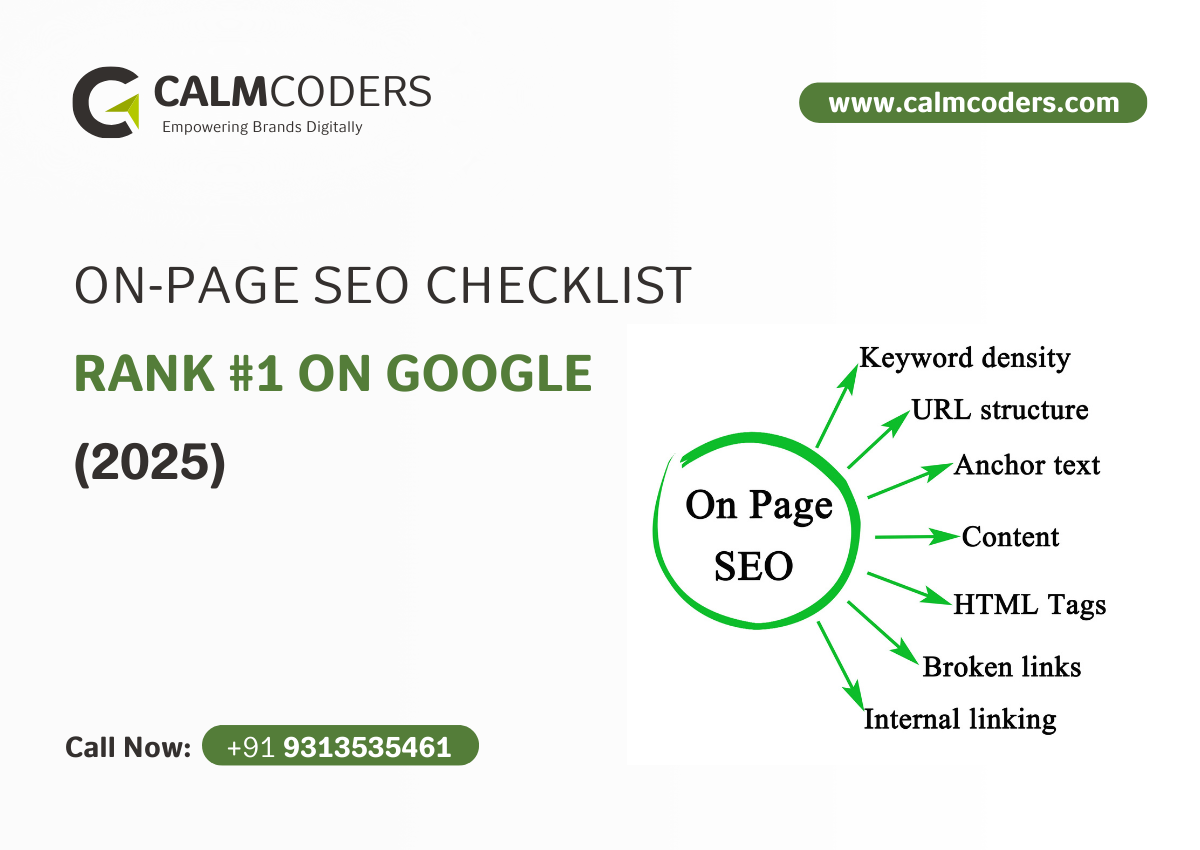Why On-Page SEO is the Key to Higher Rankings
Google processes over 8.5 billion searches per day. If your website isn’t optimized for search, you’re losing out on thousands of potential visitors. While backlinks and technical SEO matter, on-page SEO is the foundation of ranking success. Master this checklist, and you’ll outperform even the toughest competition.
This guide is packed with 15+ years of SEO expertise, real-world insights, and Google-approved strategies to help you dominate search results. Ready to optimize? Let’s dive in.
Step 1: Keyword Research & Search Intent Optimization
1.1 Find High-Value Keywords
- Use Google Keyword Planner, Ahrefs, and SEMrush to find profitable keywords.
- Focus on long-tail keywords (3+ words) for higher conversion rates.
- Prioritize keywords with high search intent (Informational, Navigational, Transactional).
1.2 Smart Keyword Placement
- Title Tag (H1) → Place primary keyword at the beginning.
- First 100 words → Google prioritizes early content.
- URL → Keep it short, include the main keyword.
- Subheadings (H2, H3) → Optimize for readability and rankings.
- Alt Text for Images → Helps Google understand visuals.
Step 2: Craft Click-Worthy Title Tags & Meta Descriptions
2.1 Optimize Your Title Tags
- Keep under 60 characters.
- Include power words (Ultimate, Best, Proven, Guide).
- Use brackets or numbers → Example: [2024 Edition].
2.2 Write Meta Descriptions That Drive Clicks
- Keep under 160 characters.
- Use action-driven language (Discover, Learn, Try).
- Add an emotional hook: Example → Boost your rankings in just 24 hours!
Step 3: URL Structure for Maximum SEO Impact
- Keep it short, readable, and keyword-rich.
- Use hyphens (-) instead of underscores (_).
- Example:
yourwebsite.com/seo-checklist
Step 4: Header Tags (H1, H2, H3) Optimization
- Only one H1 tag per page.
- Use H2 and H3 subheadings to break content into digestible sections.
- Include secondary keywords in H2s and H3s.
- Keep headers engaging & problem-solving → Example: “Struggling with SEO? Here’s How to Fix It.”
Step 5: Content Optimization (User Experience & Readability)
- Write for humans first, search engines second.
- Use short paragraphs (2-3 sentences max).
- Add bullet points and numbered lists.
- Break content with visuals (images, infographics, videos).
- Aim for 1,500+ words for better rankings.
- Avoid keyword stuffing – Natural integration is key.
- Answer common questions concisely to target Featured Snippets.
Step 6: Image SEO (Boost Traffic Through Google Images)
- Use compressed, high-quality images (TinyPNG).
- Add descriptive file names → Example:
on-page-seo-guide.png. - Write alt text with keywords for better indexing.
- Implement lazy loading to improve speed.
- Use WebP format for faster load times.
Step 7: Internal & External Linking Strategy
7.1 Internal Linking (Boost Page Authority)
- Link to related pages to keep users engaged.
- Use descriptive anchor text instead of “Click here.”
- Ensure at least 3-5 internal links per post.
7.2 External Linking (Boost Credibility)
- Link to high-authority sources.
- Use nofollow for untrusted sites.
- Open external links in a new tab.
Step 8: Mobile Optimization & Core Web Vitals
- Test your site with Google’s Mobile-Friendly Test.
- Ensure your site loads in under 3 seconds.
- Optimize font sizes & button placements.
Step 9: Page Speed Optimization
- Run a speed test with GTmetrix.
- Use a CDN (Cloudflare, BunnyCDN).
- Minify CSS, JavaScript, and HTML.
- Enable browser caching.
Step 10: Schema Markup for Rich Snippets
- Implement FAQ Schema for Featured Snippets.
- Use Breadcrumb Schema to improve navigation.
- Add Product & Review Schema for eCommerce sites.
Step 11: Secure Your Website with HTTPS & Security Protocols
- Install an SSL certificate (HTTPS is a ranking factor).
- Enable firewall protection.
- Regularly scan for malware.
Step 12: Advanced UX Techniques to Boost Dwell Time
- Improve page speed to reduce bounce rate.
- Use engaging CTA buttons.
- Add interactive content (quizzes, calculators).
- Write compelling introductions to hook users instantly.
Free On-Page SEO Tools (Must-Have)
- SEO Analysis → Ubersuggest
- Speed Optimization → PageSpeed Insights
- Keyword Research → Google Trends
- Schema Generator → Schema.org
Start Optimizing Today
If you apply even 50% of this checklist, your rankings will improve dramatically. On-page SEO isn’t just about keywords – it’s about providing the best user experience possible.
Which strategy are you implementing first? Let me know in the comments!



